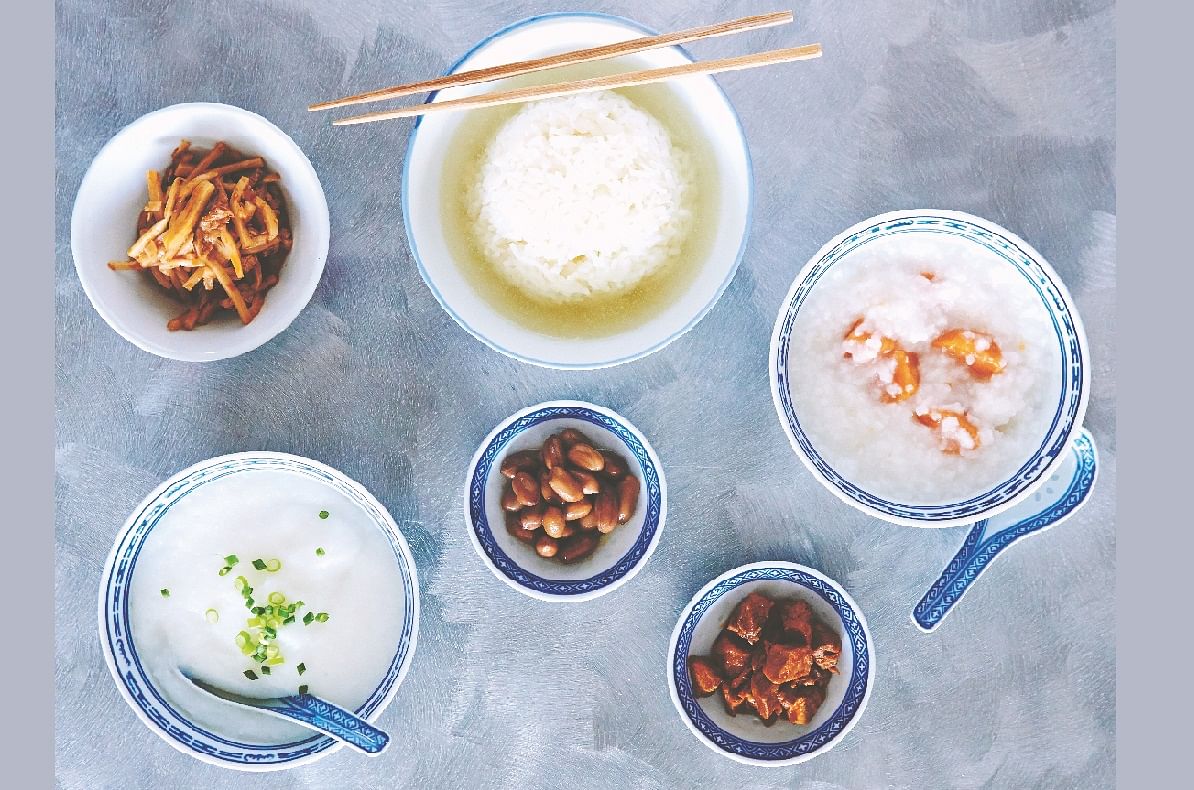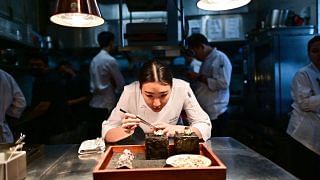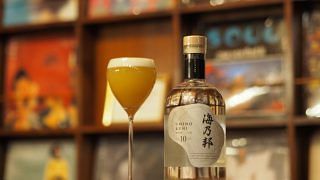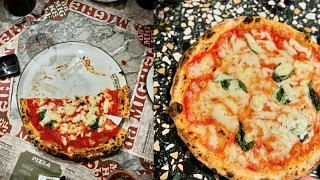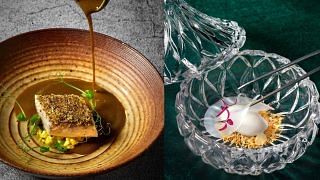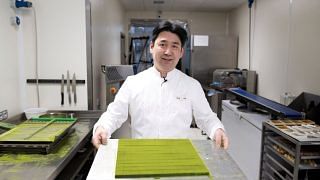[dropcap size=small]P[/dropcap]lain porridge really isn’t as plain as it seems. The origins of the dish can be traced as far back as 2,500 years. Imperial physician Chun Yuyi of the Western Han dynasty was said to have used porridge as part of the remedy for indigestion and as a dietary supplement to enhance longevity. One of the most comprehensive works on Chinese cooking and gastronomy, the Suiyuan Shidan, written by Qing dynasty poet and scholar Yuan Mei, also devoted a few paragraphs to porridge.
So, while cooked rice remains the undisputed staple for the Chinese, porridge or congee has long had an important role in Chinese cuisine, especially of the south.
Among southern Chinese, the Cantonese have taken porridge to its cultural zenith, and made its production almost an art form. Traditional practice dictates that porridge should be made up of three types of grains – new rice, fragrant rice and glutinous rice. Knowledge of this is one indicator of whether a Cantonese chef is worth his salt.
Cooked over two hours at high temperature in a technique known as lao huo zhou, each grain type contributes to the texture of the resulting dish – a thick, almost creamy porridge with a hint of rice fragrance. The dish is recommended as a way to beat the heat and humidity of summer, especially when cooked with ginkgo nuts – a dish food connoisseurs would pay top dollar for at The Chairman in Hong Kong, the restaurant reckoned to serve one of the best congee in the city.
According to chef-owner Tonny Chan of Tonny Restaurant, most restaurants in Singapore use only new rice to make porridge. The grains are added to boiling water as this helps to prevent the rice from sticking to the bottom of the pot. The high temperature also fluffs up rice faster, thus shortening the cooking time. Chef Chan hints that another time-saving method is to put in century eggs, saying: “Instead of boiling for hours, the alkali in the century egg actually hastens the cooking process.”
The chef also speaks of the habit among the older folk of asking for a bowl of “porridge water”, a milky liquid drained from the porridge. Many salutary effects are attributed to this fabled porridge water, including the promotion of longevity through warming the stomach without stressing the stomach muscles. “The younger generation have probably never heard of this,” says the chef with a laugh, who nevertheless has introduced porridge water as a form of soup in a specially prepared hotpot on his menu.
Chef-owner of Teochew Restaurant Huat Kee – Lee Chiang Howe, better known as Fa Ge – stresses the central role of porridge in the cuisine of his people who also hail from southern China. Congee, or muay, is famously served on the Teochew table from breakfast until supper. He explains that the climate of the Teochew homeland is warm and humid, and perspiration rates are consequently high. Muay helps replenish lost body fl uids and is easy to eat, even on diminished weather-weary appetites.
Using freshly harvested rice is key to making Teochew porridge, he reveals. Unlike the style of the Cantonese, Teochew porridge does not require hours of boiling. “Add the rice to boiling water and bring it to 100 deg C,” instructs chef Lee. “Keep stirring for 10 minutes, turn off the heat, close the lid and allow the rice to sit for another 10 minutes.”
The Teochew also have a savoury porridge made of rice mixed with a light broth, with meat – mostly seafood – added in a quick boil. Alfred Ow, executive chef of Hokkien restaurant Quan Xiang Yuan Seafood Restaurant, notes that while the Hokkien style shares many similarities with the Teochew when it comes to porridge, they have their own version of savoury porridge called “kiam muay”.
“Instead of seafood, we use marinated pork, deep-fried strips of tau kwa, and dried shrimps as main ingredients,” explains chef Ow. While similar in appearance at first glance, the Hokkien porridge is distinguished from the Teochew version by the use of sweet potato and its less watery form. The Dutch first introduced the sweet potato to Taiwan when they occupied the island in the 1600s. From Taiwan, the sweet potato made its way to China’s Fujian province – homeland of the Hokkien – where it became an ingredient in Hokkien porridge as it “bulked” up the watery dish and helped fi ll the stomach.



